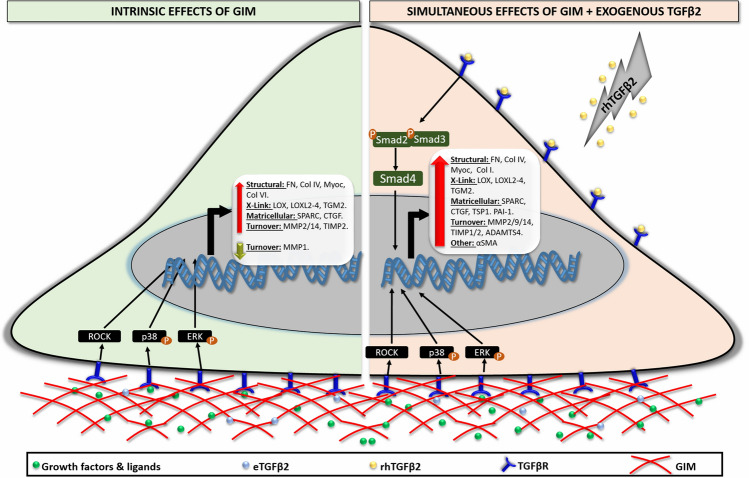Figure 10.
Schematic representation of the effect of GIMs on TGFβ signaling in hTM cells with or without exogenous TGFβ2. (Left cellular compartment) In the absence of exogenous TGFβ2 or DEX, GIMs activate non-Smad TGFβ2 signaling in correlation with increased expression/activity of specific ECM structural, matricellular, and crosslinking genes/proteins in hTM cells. Imbalances in genes/proteins responsible for ECM turnover (MMPs and TIMP2) lead to impaired ECM degradation, increased ECM deposition and stiffness associated with ocular hypertension. (Right cellular compartment) In the presence of exogenous TGFβ2, GIMs potentiate Smad and non-Smad TGFβ2 signaling in association with actin cytoskeletal and more pronounced ECM changes in hTM cells. Concurrent dysregulated ECM turnover (increased MMPs and TIMPs) results in more pronounced ECM accumulation and stiffness implicated in ocular hypertension. rhTGFβ2 recombinant human transforming growth factor beta 2. DEX Dexamethasone. GIM glucocorticoid-induced cell-derived matrix. ECM Extracellular matrix. eTGFβ2 ECM-derived TGFβ2. TGFβR TGFβ receptor complex. hTM Human trabecular meshwork. MMPs Matrix metalloproteinases. TIMPs Tissue inhibitor of matrix metalloproteinases. CTGF Connective tissue growth factor.

